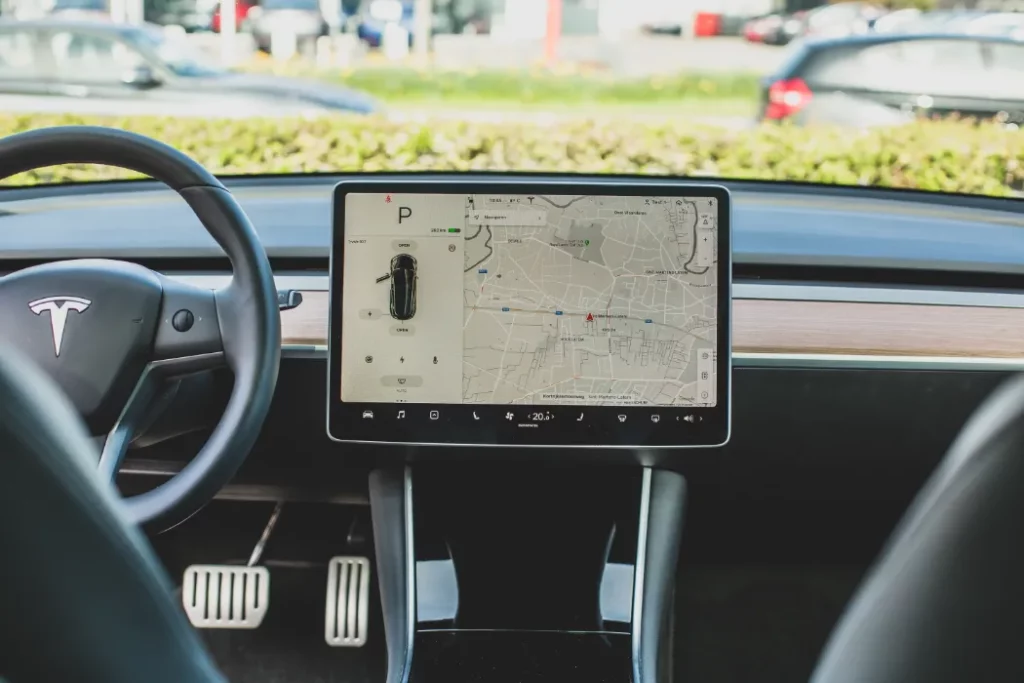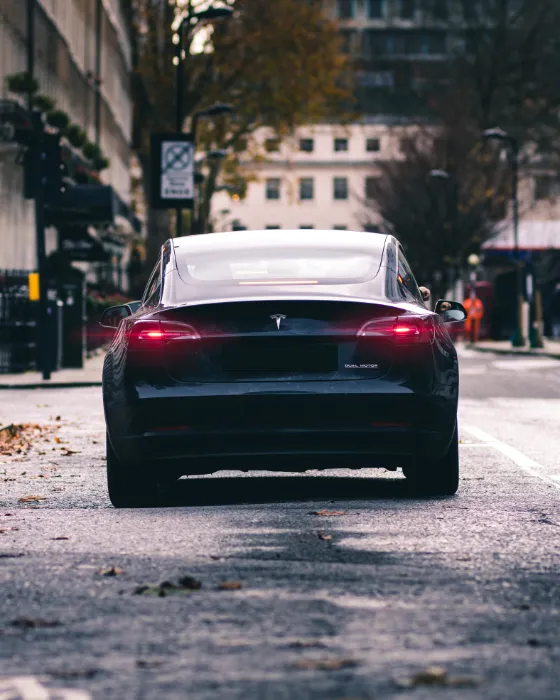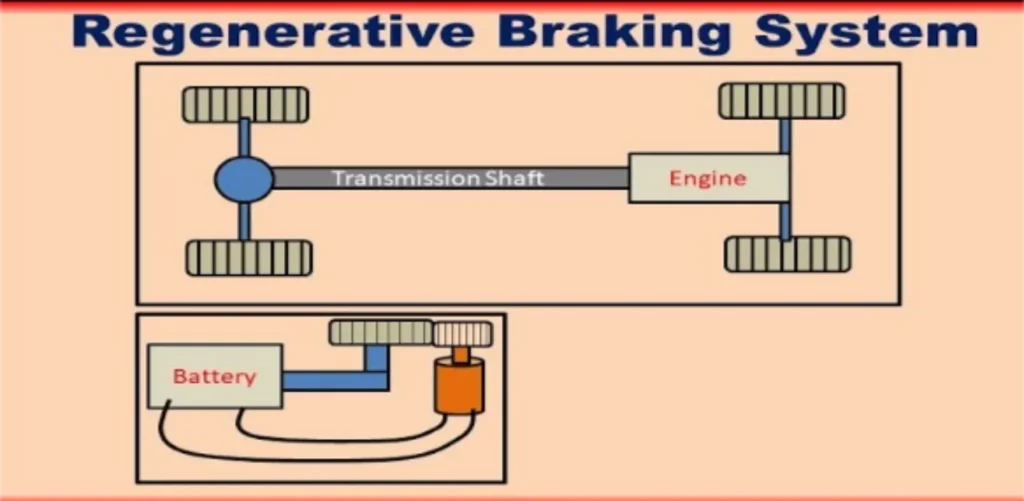Every Tesla car by default comes with a Regenerative braking system. But there seems to be some kind of confusion about the Regenerative process, where many have raised the question: do tesla brake lights come on during regenerative braking?
This post will define Regenerative braking and how it works in Tesla cars. It will also explain whether or not the procedure triggers Tesla brake lights and if so, why it does that. So, keep reading to clear things up!
Quick Glance:
- The regenerative braking system of Tesla EVs is also referred to as the “one pedal” driving system.
- Tesla suddenly stopped providing its adjustable regenerative braking option in 2020 but reintroduced it with the new Tesla software released in early 2023.
- Reportedly, Tesla’s regenerative braking can increase the car’s range by up to 10% and extend 50% of the life of its braking mechanisms.
- One should not charge their Tesla battery more than 90% to optimize their car’s regenerative braking.

What Exactly Is Regenerative Braking?
It is a unique feature or technology used in all hybrid vehicles and electric vehicles like Tesla Models. It is commonly referred to as either “Regen” or “RBS”.
The Regen braking system of Tesla vehicles allows the car to recover and store energy while slowing down, decelerating, or braking. Unlike traditional vehicle braking systems that rely solely on friction to slow down the vehicle, regenerative braking converts the kinetic energy into electrical energy, which can be stored in the EV’s battery for later use.

How Does Tesla Regenerative Braking Work?
As the driver hits the brakes during driving, the electric motor on the Tesla car starts working reversely and switches into the “Generator Mode.”

So, instead of consuming the electricity, as a generator the electric motor starts to produce it. This generator mode converts kinetic energy into electricity. This generated electricity is fed back into the battery, which helps to recharge it and extend the vehicle’s overall range.
That’s how the regenerative brake allows the driver to recapture most of the braking energy that would be lost traditionally.
However, only the electric motor is used to slow down the vehicle during regenerative braking and does not engage the traditional friction brakes.
Tesla also offers different levels of regenerative braking and allows the drivers to customize it according to their driving preferences.
For example, Tesla drivers can choose between standard regenerative braking. You can either choose the “stopping mode” which simulates the deceleration of A gasoline-powered car or the “creep mode” where the car slows down significantly as you release the car’s accelerator pedal.
Do Tesla Brake Lights Come on During Regenerative Braking?
Yes, Tesla brake lights do indeed come on during regenerative braking.
These lights actually turn on as part of Tesla’s essential safety feature to confirm that other road users are aware of the car’s deceleration. It works in the same way that brake lights activate when traditional braking is performed.
The brake lights on Tesla vehicles are programmed to turn on anytime the driver applies any type of braking, whether regenerative or friction-based.
This action alerts other nearby drivers and pedestrians that the Tesla vehicle is slowing down. This also promotes and prevents any potential risk of accidents or rear-end collisions.
But how does regenerative braking activate Tesla’s brake lights?
This precise mechanism is also known as brake light activation during regenerative braking. Tesla Regen process involves sensors and algorithms that monitor a combination of inputs, such as:
- The rate of deceleration,
- The position of your car’s accelerator pedal, and
- The activation of other nearby vehicle systems.
These inputs work together to trigger the brake lights when necessary. That is when the brake lights come on to signal the vehicle’s reduced speed even if the brake pedal was untouched during the braking.
However, the brightness of the brake lights during regenerative braking may differ from that during friction braking.
Related Post: Why Does Tesla Brake Squeak? (Causes and Fixes Explained!)
Benefits of Activating Tesla Brake Lights:
The brake light activation during your Tesla regenerative braking offers several advantages, such as:
1. Enhanced Safety:
Brake lights work as an essential safety feature since they signal other drivers that your car is slowing down during regenerative braking.
2. Predictability:
The consistency of this action helps create predictability on the road. It is especially useful for those who are used to seeing brake lights during any type of deceleration to anticipate and react to the changing traffic conditions.
3. Legal Compliance:
Many traffic laws require vehicles to have working brake lights that activate when the driver applies the brakes.
Tesla is also aware of those global regulations and designs features for its electric vehicles that can comply with them. Its regenerative braking feature is also no exception and fulfills the standard global safety requirements.
Related Post: Tesla Automatic Emergency Braking Disabled: Why Does this Happen?
How To Change Your Tesla Regenerative Braking?
To adjust the regenerative braking settings on your Tesla vehicle, follow these simple steps:
- Go to your car’s central touchscreen display and press on the “Control” menu.
- Then, depending on your vehicle model and software version either try to find “Driving” or “Pedals & Steering” and tap on that.
- Next, scroll through and click on the “Regenerative Braking” sub-section to adjust the level of your Regen braking setting.
- Underneath the “Regenerative Braking” option, you will see two options to choose between “Standard” or “Low.“
- “Standard” provides the maximum amount of regenerative braking when you release the throttle or accelerator and slow down your Tesla Model.
- “Low” restricts or limits the regenerative braking as you release the pedal or accelerator. But your car will take longer to slow down and coast farther than if it was set to “Standard.”
Frequently Asked Questions [FAQs]
How far can Tesla regenerative braking get you?
Estimates show that regenerative braking can add up to 10% more range and can extend 50% life of Tesla’s braking mechanisms.
Are Tesla brake pads used in regenerative braking?
No, the regenerative braking does not use Tesla’s brake pads during the process.
Are Tesla’s brake lights activated when slowing down using regenerative braking?
Yes, absolutely. Tesla’s brake lights are designed to light up during regenerative braking maneuvers.
Is Tesla’s regenerative braking on all the time?
Yes, the regen feature is always active on Tesla cars. You can only switch between its “Standard” and “Low” settings.
